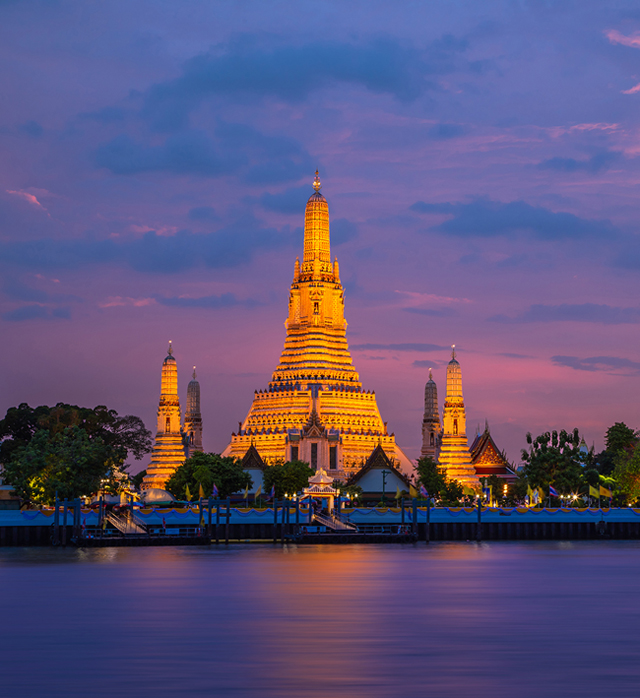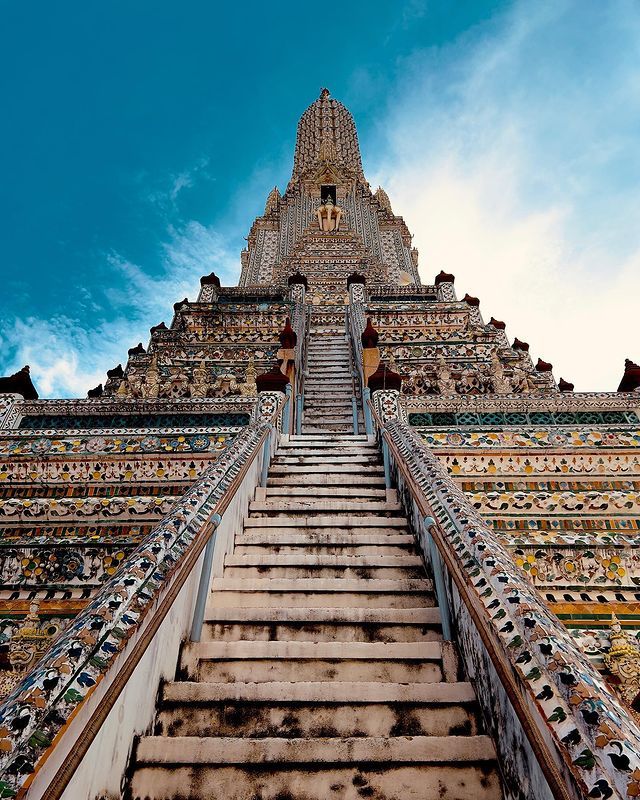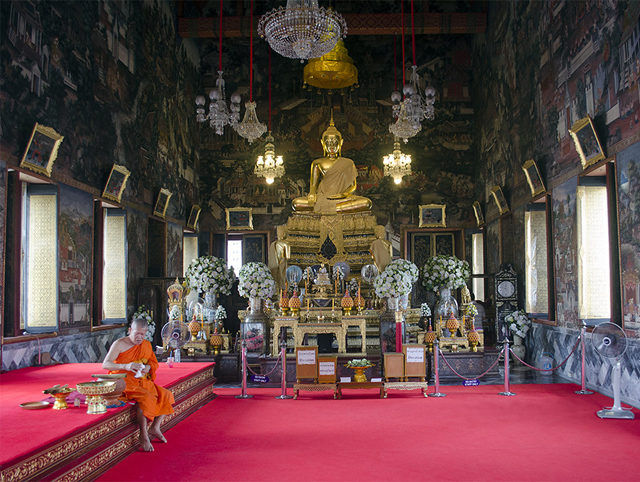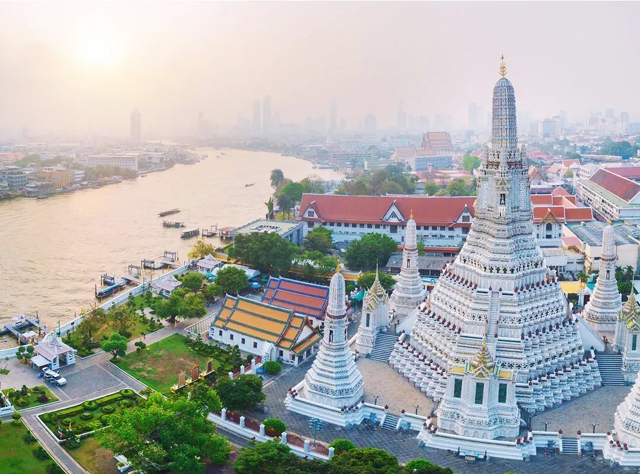Wat Arun Bangkok - An Ancient Buddhist Temple and Landmarks of Thailand.

Wat Arun or Wat Arun Ratchawararam Ratchawaramahawihan is a Buddhist temple located on the Thonburi west bank of the Chao Phraya River in Yai district of Bangkok, Thailand. The temple derives its name from the Hindu god Aruṇa, often personified as the radiations of the rising sun. Wat Arun is among the best known of Thailand's landmarks. The first light of the morning reflects off the surface of the temple with pearly iridescence. Locally called Wat Chaeng, wat arun or the Temple of the Dawn, Bangkok, is an ancient temple dating back to the Ayutthaya Period. Although the temple has existed since at least the seventeenth century, its distinctive prang (spire) was built in the early nineteenth century during the reigns of Rama II and Rama III. Wat Arun is an important place of worship for Buddhists and it's also a very popular for tourists in Thailand.

The main feature of Wat Arun is its central prang, which is encrusted with colourful porcelain. This is interpreted as a stupa-like pagoda encrusted with coloured faience. The height is reported by different sources as between 66.8 m (219 ft) and 86 m (282 ft). The corners are surrounded by four smaller satellite prang. The prang are decorated by shells of Mauritia mauritiana and bits of porcelain, which had previously been used as ballast by boats coming to Bangkok from China. The central prang is topped with a seven-pronged trident, referred to the "Trident of Shiva". Around the base of the prang are various figures of ancient Chinese soldiers and animals.

Over the second terrace are four statues of the Hindu god Indra riding on Erawan. In Buddhist iconography, the central prang is considered to have three symbolic levels - base for Traiphum indicating all realms of existence, middle for Tavatimsa, the Tusita Heaven where all desires are gratified, and the top denoting Devaphum indicating six heavens within seven realms of happiness. At the riverside are six pavilions (sala) in the Chinese style. The pavilions are made of green granite and contain landing bridges. Next to the prang is the Ordination Hall with a Niramitr Buddha image supposedly designed by Rama II. The front entrance of the Ordination Hall has a roof with a central spire, decorated in coloured ceramic and stuccowork sheathed in coloured china. Inside, there is a grand altar with a red, grey and white marble decoration. There are two demons, or temple guardian figures, in front. The murals were created during the reign of Rama V.
As one important temple in Thailand history, there are many unique attractions in Wat Arun in Bangkok, especially the central prang, a stupa-like pagoda encrusted with colorful glazed porcelain, tiles, seashells, Giant statues, the Ordination Hall, the Bell Tower and many Buddha statues. The best time to visit Wat Arun is in the evening. You can reach the place by 5 pm and enter the premises. Spend an hour or more there and then cross over to the other side of the river. You get to witness Wat Arun in golden halogen lights after the sunset. Wat Arun is open at 7:30 am to 5:30 pm daily.

Wat Arun can be accessed through the Chao Phraya River and ferries travel across the river towards the Maharaj pier. For foreigners, the temple charges an entrance fee of 100 baht. The ferry ride across the Chao Phraya River costs around 4 baht and that is all the expense there is for visiting Wat Arun. During Kathina, the king travels to Wat Arun in a procession of royal barges to present new robes to the monks there.
-
Hotel near Wat Arun - Buddhist Temple Bangkok
- Hotel near Wat Arun - Buddhist Temple Bangkok is Akara Hotel (11 Km, 25min).
 EN
EN